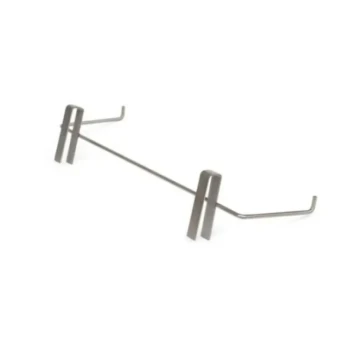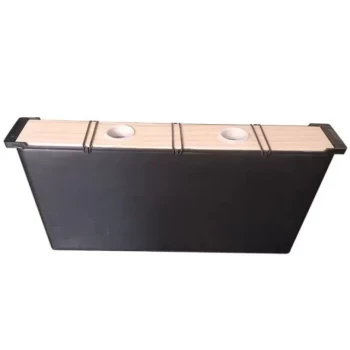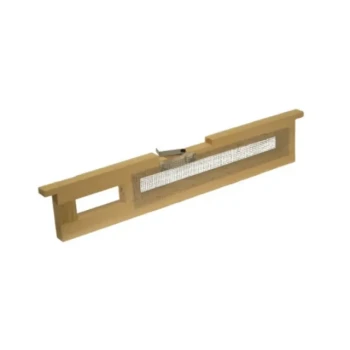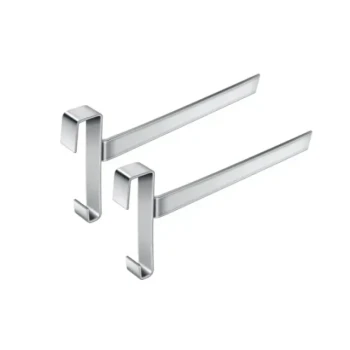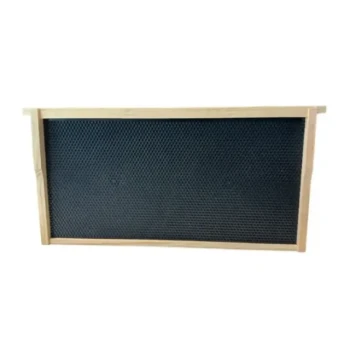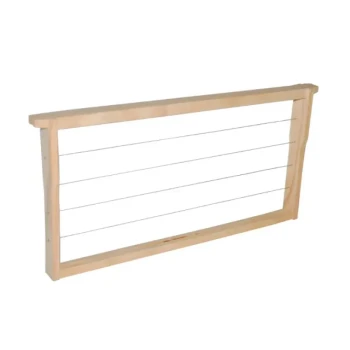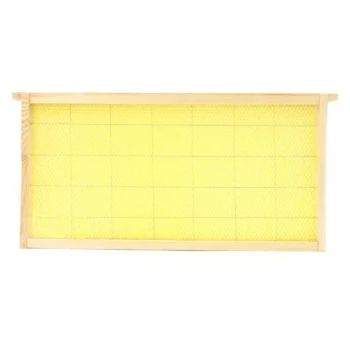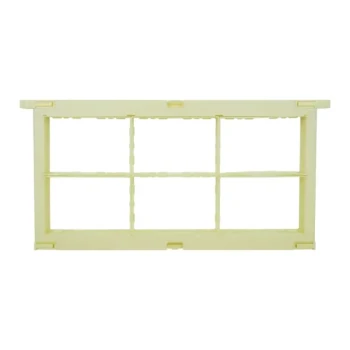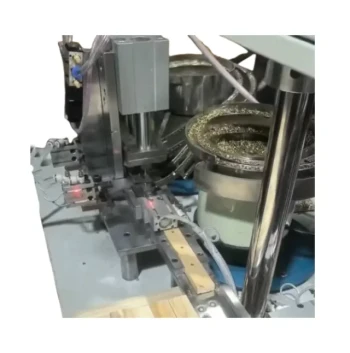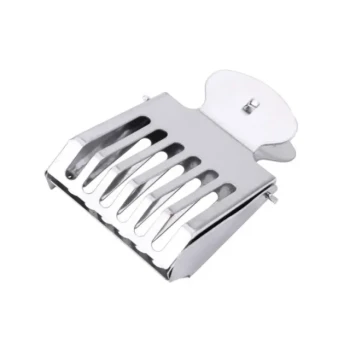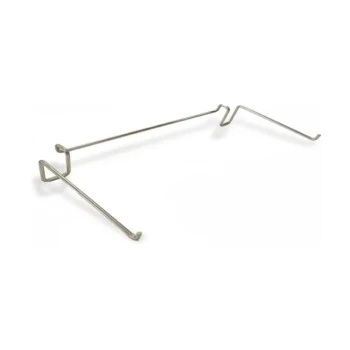In their natural state, no. Bees do not inherently like plastic frames because plastic is an entirely foreign material to them. For bees to accept and build comb on plastic, the frames must be coated with a layer of real beeswax to serve as an attractant and a starting point for their work.
The core issue is not whether bees "like" plastic, but whether they will accept it. While bees will always prefer natural wax, properly coated plastic frames can be a durable and effective tool in a beekeeper's hive management strategy.
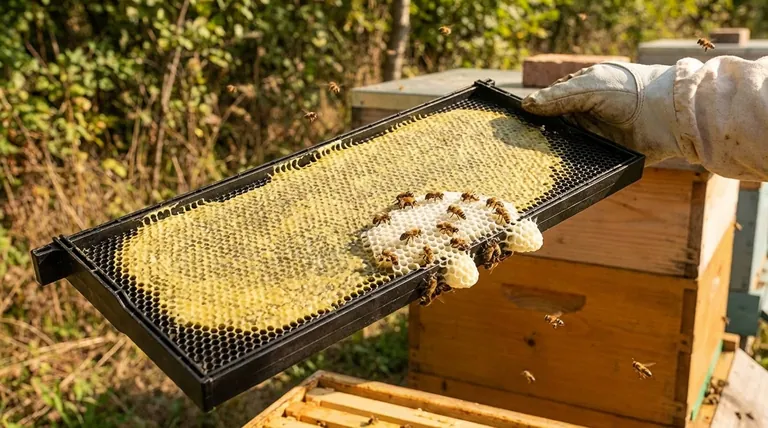
Why Bees Resist Plastic Frames
Bees are creatures of instinct, driven by millions of years of evolution centered around wax, not polymer. Understanding their natural preference is key to successfully using any type of hive equipment.
The Natural Preference for Wax
Bees produce wax from their own bodies. It is the literal building block of their home, where they raise their young and store their food.
An uncoated plastic frame lacks the familiar scent and texture of beeswax, making it an undesirable and alien surface for comb construction. Given the choice, bees will almost always build on natural wax foundation before they touch bare plastic.
The Barrier to Natural Behavior
When building comb without a guide (foundation), bees engage in a behavior called festooning. They hang together in chains or curtains, forming a living scaffold from which they construct the comb.
A solid plastic foundation can interfere with this, forcing the bees to work from two separate sides of a barrier rather than as a single, cohesive unit. This can require more time and energy from the colony.
How to Ensure Bees Use Plastic Frames
While bees don't prefer plastic, you can make it highly acceptable to them. The solution is simple and universally recommended: add wax.
The Critical Role of a Beeswax Coating
The single most important factor for success with plastic frames is a proper coating of beeswax. You can purchase frames "pre-waxed," but the quality and thickness of this coating can vary significantly.
Many experienced beekeepers enhance factory-waxed frames or coat bare ones themselves by using a brush to apply a thin layer of melted beeswax.
Why Coating Works
The beeswax coating bridges the gap between the artificial frame and the bees' natural instincts. It provides the scent, texture, and starting material they need to get to work.
Once the bees begin drawing out the comb on the wax coating, they will continue to build upon it, eventually covering the entire plastic foundation with their own natural, perfect comb.
Understanding the Trade-offs
Choosing between plastic and natural frames involves balancing the preferences of the bees against the practical needs of the beekeeper. There is no single "best" answer, only the best choice for your specific goals.
The Case for Plastic Frames
The primary advantages of plastic frames are for the beekeeper. They are far more durable than wax foundation, standing up to repeated use and the high G-forces of honey extractors without breaking. They are also less susceptible to pests like wax moths and can be cleaned and reused for many years.
The Case for Natural Wax or Foundationless
Frames with natural wax foundation or no foundation at all cater directly to the bees' preferences. They allow for the natural festooning behavior and give bees complete control over the cell size they build, which some beekeepers believe is important for colony health. The trade-off is that these frames are more fragile and require more careful handling.
Making the Right Choice for Your Goal
Your decision on frame type should be guided by your beekeeping philosophy and operational needs.
- If your primary focus is creating the most natural hive environment possible: Choose foundationless frames or those with pure beeswax foundation to accommodate the bees' innate behaviors.
- If your primary focus is durability, long-term cost, and operational efficiency: Choose plastic frames, but commit to ensuring they are always well-coated with beeswax to guarantee acceptance.
Ultimately, successful beekeeping hinges on understanding and working with your bees' powerful natural instincts.
Summary Table:
| Aspect | Bees' Preference | Beekeeper's Advantage |
|---|---|---|
| Natural Comb Building | Prefers pure beeswax foundation | Requires wax coating for acceptance |
| Durability | N/A (natural wax is fragile) | High durability, reusable for years |
| Pest Resistance | N/A | Less susceptible to wax moths |
| Handling | Allows natural festooning behavior | Withstands honey extractor forces |
Optimize your apiary with durable, bee-accepted equipment from HONESTBEE. We specialize in supplying high-quality beekeeping supplies and equipment—including pre-waxed plastic frames—to commercial apiaries and distributors. Our wholesale-focused operations ensure you get reliable, cost-effective solutions that balance bee health with operational efficiency. Contact HONESTBEE today to discuss your bulk equipment needs and enhance your hive management strategy!
Visual Guide
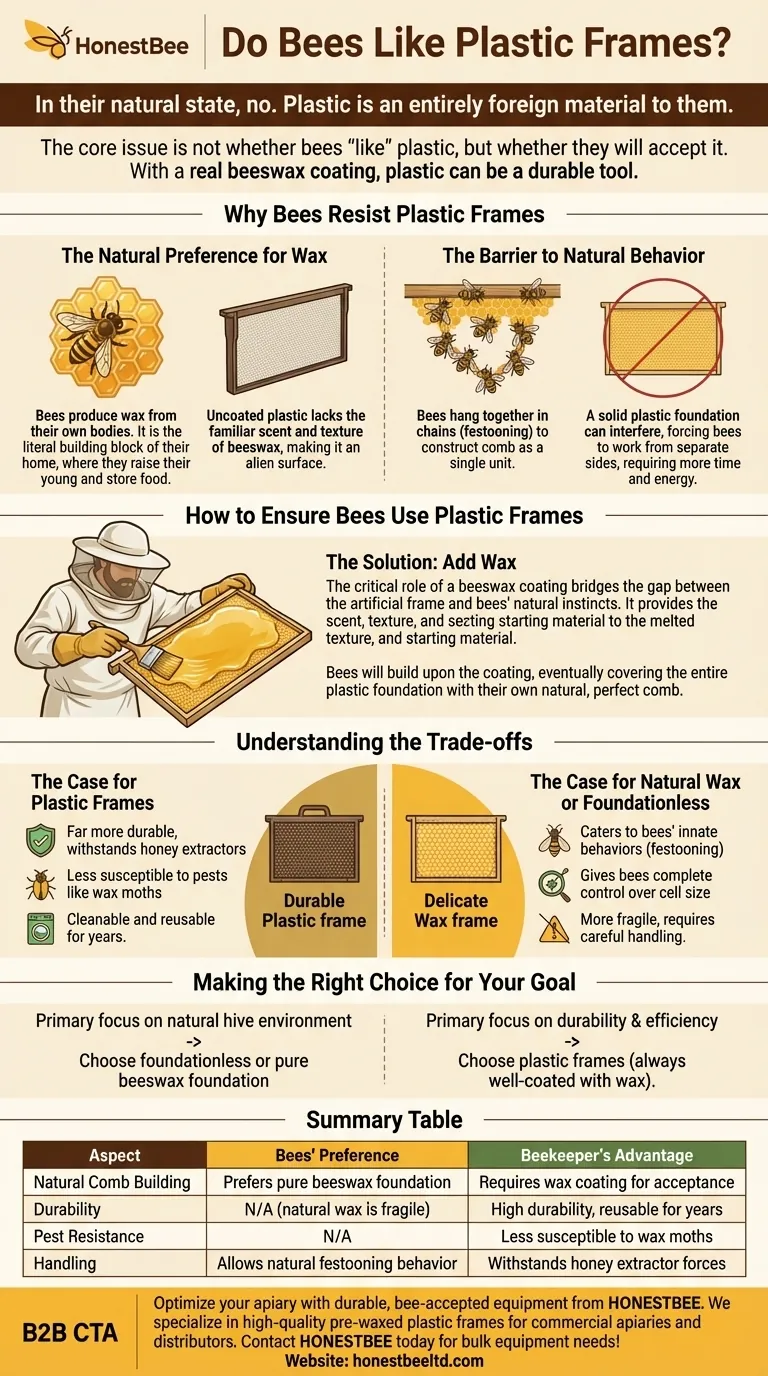
Related Products
- Plastic Bee Frame Beekeeping Hive Frames for Wholesale
- 7 x Auto Bee Flow Hive Frames Plastic Beekeeping Hive Box Supplies
- Heavy-Duty Stainless Steel Clip-On Frame Perch
- Professional In-Hive Frame Bee Feeder by HONESTBEE
- JZBZ Langstroth Queen Rearing Frame for Beekeeping
People Also Ask
- What is the role of oxalic acid in plants? A Key to Plant Defense and Internal Regulation
- Why are plastic frames popular in commercial beekeeping? Boost Efficiency & Durability at Scale
- What are the differences between wooden and plastic frames in beehives? Choose the Best for Your Apiary
- What are the main types of frames available for beehives? Wood vs. Plastic for Your Apiary
- Are plastic frames good? Boost Apiary Efficiency with Durable, Pest-Resistant Frames


